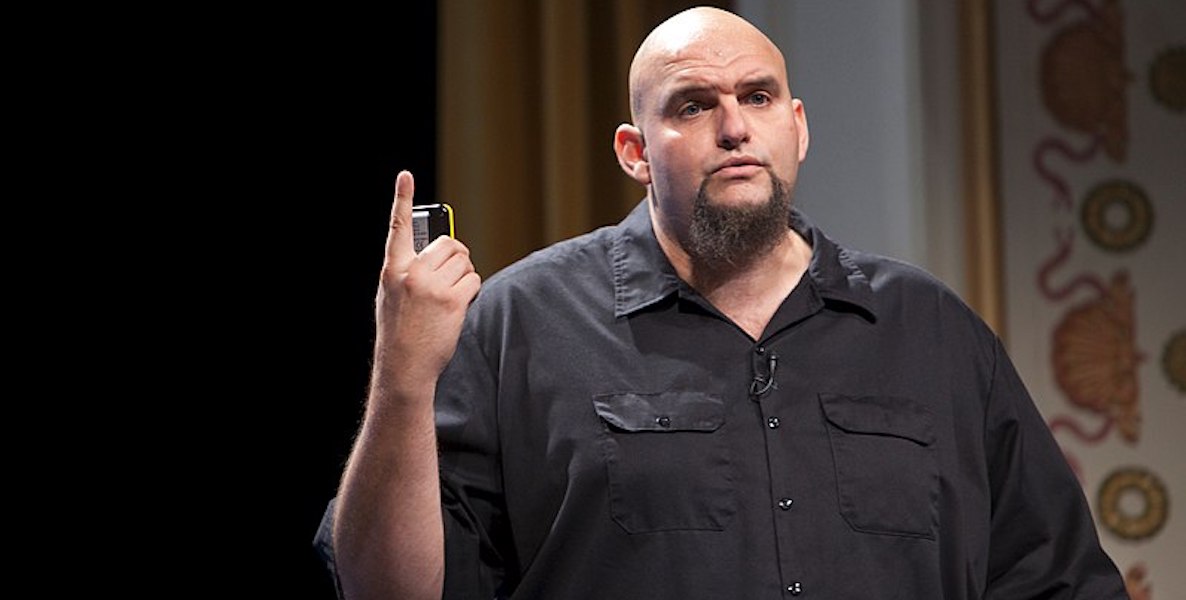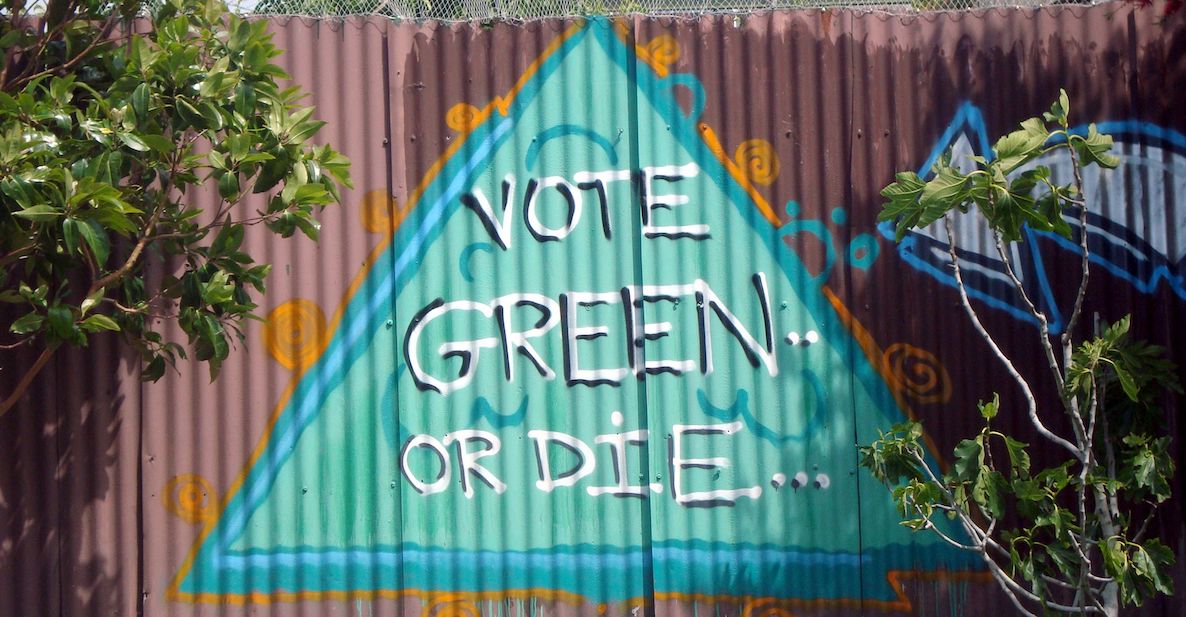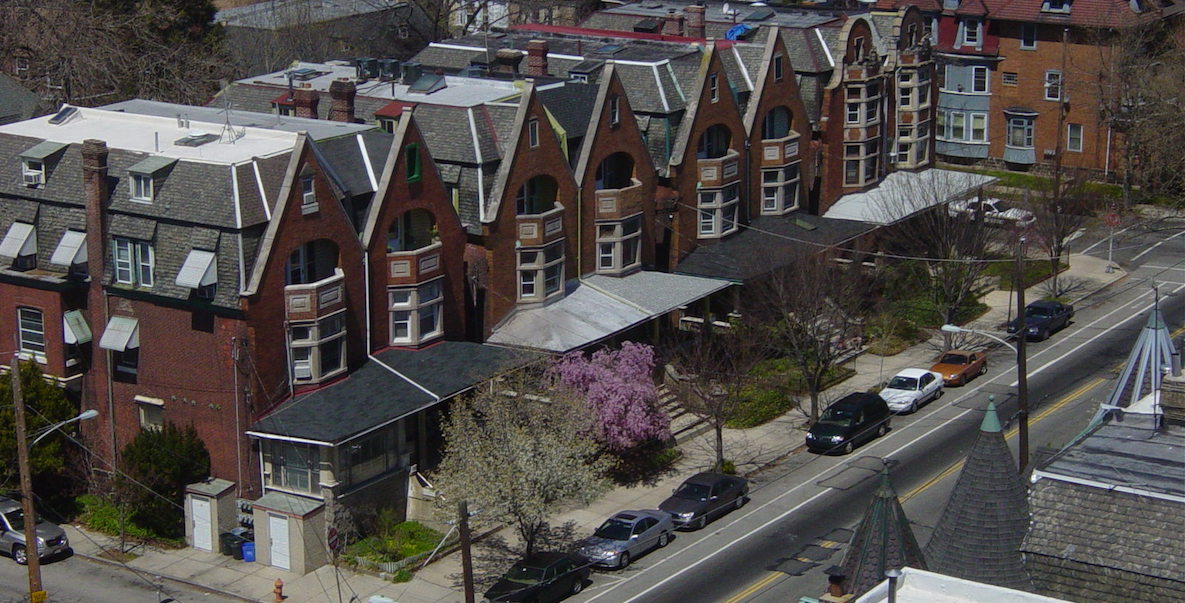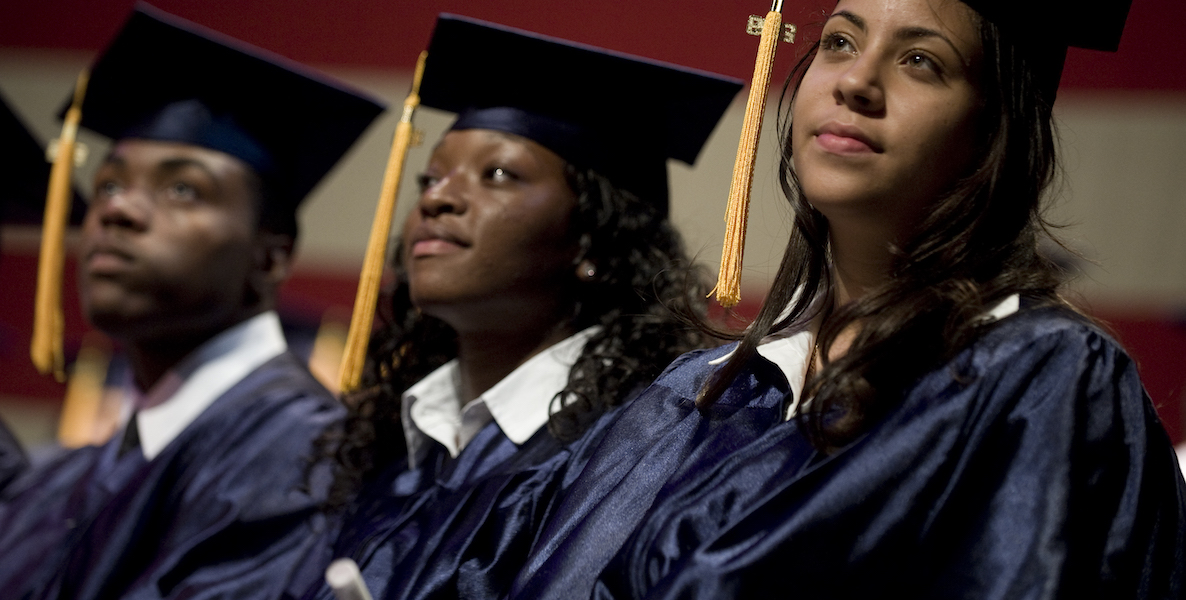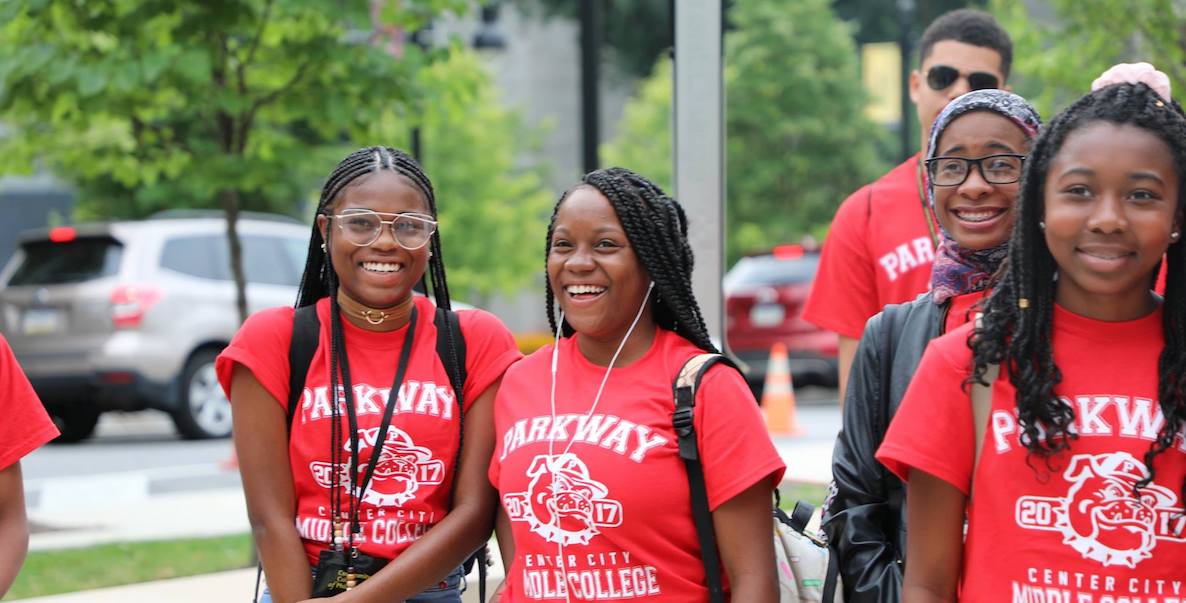As a reckoning continues over the recent college admission cheating scandal—and as college tuition continues to rise—a question has occasionally popped up during WURD Reality Check broadcasts: What are Philadelphia’s prestigious, world-renowned academic institutions doing to help Philadelphia’s struggling K-12 students get much-needed college degrees?
Not as much as they could.
Mayor Kenney has made pre-K-12 education a cornerstone of his administration, and the school district slowly, but steadily, raised the four-year graduation rate to 72 percent last year. But that’s not enough at a time when economists predict 65 percent of jobs will require some sort of college degree in the next few years. Of those Philly students who graduated high school last year, only 55 percent went on to enroll in college last fall—a slight drop from the previous year—and citywide, only 25 percent of residents have a bachelors degree. Those numbers don’t add up to a city on the brink of a solid future.
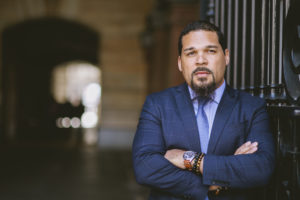
Yet in the midst of our university town, there is no centralized, well-coordinated effort to funnel under-served K-12 students into dual-enrollment programs, or preferred-admission articulation agreements, which could give them a headstart on college. That could be a major game-changer in not only fixing Philly public schools through a focus on the “K-16” model—rather than K-12—but it could also change the lives of Philadelphia’s most distressed kids for the better.
As someone who was once one of those kids and recognized early on how these programs were only available to the families who either happened to stumble upon them or had a connection through a family member, counselor or teacher kind enough to take extra time and navigate them there, I know that the students who are the most desperate need something much more bold, visionary and sincere than that. It’s one, among many reasons, droves of talented underserved youth end up lost.
City Hall and the university community, truly teamed up, could help them find their way.
“I think Philadelphia schools have strong relationships with our local universities,” Philadelphia School District Deputy Chief of Communications and spokesman Lee Whack told Reality Check recently. “It could be better.” Whack touts current dual enrollment programs with four universities, as well as college preparation and other special programs across the district. Right now, high school students across the district can earn up to 15 credits—at no cost—through programs at Temple University, Community College of Philadelphia, Arcadia University and LaSalle University.
Pennsylvania Department of Education, under Gov. Wolf, is pushing for more “dual enrollment” or articulation agreements between Keystone State high schools and colleges within the Commonwealth. Philadelphia is absent from the list of participating districts.
The problem here is that it’s only 15 credits—it actually takes 120 credits to finish a four-year degree, 60 credits to complete an Associates degree. And while these four schools might be a good start, that’s not the entire university community, nor does it include elite giants like Penn and Drexel.
The District last school year made a start in this direction with Parkway Center City Middle College, an ambitious dual-enrollment partnership between the district and CCP that ensures its students graduate from high school with both high school diploma and an Associate’s Degree so they’re already halfway through college by the time they’re finished K-12. That approach is so successful, and cost-effective for the students, that it would seem natural for the district, Mayor and City Council to expand this model everywhere and with every college in the city.
Are there any urgent plans—because the state of Philadelphia’s K-12 student body is urgent—to replicate this throughout the city, with other schools and with other institutions? Why have these large, world-class institutions next door, anyway, when the communities have little ongoing formal access—Philly students with special “passports”—to college credit-gaining and workable resources in them? Where’s that specialized, widely publicized school district program that invites Philadelphia 8th thru 12th graders to work hard towards a unique Philly Campus Pass (just riffing) that gives them a special ID, special access to campus resources such as think tanks, laboratories and libraries, and access to classes, lectures and other events while creating a pathway to college credit and the building blocks for financial aid? And where is the city office that manages something like that?
“We would love to set up more dual enrollment arrangements, of course,” Whack says. “In fact, Philly had more robust programs like this, but lost the federal funding support for them. So in order to this, we have to rely on partners and funders to help implement these type of programs.”
![]()
This is a conversation that has lasted as long as any Philadelphian can remember, pointing to a troubling disconnect between the city’s more vulnerable residents and the university community. (WURD attempted to bridge that disconnect back in September with its Blackademia Part I discussion which convened the highest ranking African American officials at those institutions, including Penn Provost Wendell Pritchett and Drexel Provost M. Brian Blake.)
And it comes during a nationwide conversation about America’s “meritocracy,” the increasing lack of diversity on college campuses (despite the general consensus that more is needed), and the exposure of a dangerous haves-have nots college admission system that everyone knew about (and America’s middle class was complicit in) for generations … but the Feds just suddenly stumbled upon.
Philly’s vaunted university community can point to several programs for the city’s student population that either tout partnerships between specific institutions and the city school district or individual schools, or highlight creative ways in which the community can occasionally tap into those institutions’ resources. But they are relatively small-scale.
Of those Philly students who graduated high school last year, only 55 percent went on to enroll in college last fall—a slight drop from the previous year—and citywide, only 25 percent of residents have a bachelors degree. Those numbers don’t add up to a city on the brink of a solid future.
Take Temple University as an example. Perhaps North Philadelphia residential advocates would be less inclined to revolt against plans for a massive, budget-hemorrhaging football stadium that threatens to displace them if Temple had a permanent articulation agreement with the city that included 60-credit dual-enrollment (not 15) programs, an eligibility-driven endowment, and an enrollment pipeline specifically created for sizable numbers of graduating, in-need and promising Black high school graduates. That doesn’t exist. Instead, it has a range of summer programs for high school students. And, if a student is “eligible,” they can “register for college-level courses” (and pay for them). But good luck if you can find out about those programs buried deep within the crevices of Temple’s website.
Drexel provides an “assisted schools initiative” that “work[s] side-by-side with principals and teachers at these schools to support and enhance instruction,” and last year launched Science Leadership Academy Middle School with the district and Inquiry Schools near its campus. Penn has its “University-Assisted Community Schools” effort under its Netter Center, and the Sadie Alexander School, a partnership between the university, the School District and the teachers union, that has turned a once struggling neighborhood school into one of the rare (and, as usual, middle class) success stories.
![]()
That’s all well and good for the students, many of them children of faculty, who are lucky enough to go to those schools and then transfer to city magnets after 8th grade. For the rest, Penn offers “Summer High School Programs,” and the “Young Scholars Program,” neither directed specifically at neighborhood kids, but at students from the region and around the country who have the ability to afford pricey program tuition fees.
In any case, “community engagement” and “outreach” don’t translate into the actual movement of Philadelphia public school students—90 percent classified as low income and lacking access to opportunities—into those universities. There’s this massive student body of potential recruits living within city limits who are the intellectual brain trust of Philadelphia’s future that could easily boost local university enrollment and diversify those campuses overnight. Those schools, in a city that’s 44 percent black, could use it: Penn’s black student population is 7 percent, Drexel is just over 5 percent and Temple is a little bit better at just under 12 percent. LaSalle has climbed to 19 percent.
And, there’s no way of knowing if the School District is creating a pipeline of its students into these schools because unlike the New York City Department of Education—which has a formal K-16 Initiatives program with City University of New York—there is no high-level coordinating arm in Philadelphia. Not in the School District, and not in City Hall.
Instead, city students are reliant on severely overworked guidance counselors or other school administrators to point them in the right direction, or on a network of individual non-profits like Philadelphia Futures, or through the Philadelphia Education Fund (which barely has a functional website).
There is—almost literally—a roadmap for the types of arrangements that could give more access to more students in our local universities. Pennsylvania Department of Education, under Gov. Wolf, is pushing for more “dual enrollment” or articulation agreements—a way to transfer credits—between Keystone State high schools and colleges within the Commonwealth, going so far as to produce a guidance “tool kit” on how to set that up.
Pittsburgh has joined in, with a centralized 3,000-student strong “College in High School” program with the University of Pittsburgh, in which students take college-level course, taught by their teachers at their school, for about $245. Those classes then count towards college credit. According to state and academic research, high schoolers who take college-level classes are more likely to be ready for college, complete college, and do so in fewer years.
That divide between high school and college in Philadelphia is, in so many respects, a chasm. Both spaces are hiding from one another in plain sight, and there’s no city leader—including the Mayor and City Council—making the kind of noise necessary that will force them towards grand collaboration.
Allentown and Johnstown school districts also have dual-credit programs, with area universities, as do all the state’s community colleges and several of the state universities. Curiously, the Philadelphia School District—with the most students and the most local universities—remains absent from the list of participating districts.
Locally, only Cheyney University has an articulation agreement, transferring students from Community College of Philadelphia. Drexel University, among others, has a similar dual enrollment agreement with the technical-skills focused Pennsylvania Institute of Technology.
Education experts, these days, are encouraging the “K-16” approach, whereby the traditional four-year undergraduate model is a naturally flowing extension of K-12. “While it is encouraging that this salient issue is receiving attention, it is far from clear that the work being completed will be more effective than past efforts in the states in building student transitions from high school to college,” note Stanford’s Michael Kirst and Michael Usdan. “This is not to say that the efforts ought not be taken, for they should be, and more as well. We are suggesting, rather, that they be understood in historical context, so as to move beyond the historical barriers to K–16 reform that are so powerfully entrenched.”
That divide between high school and college in Philadelphia is, in so many respects, a chasm. Both spaces are hiding from one another in plain sight, and there’s no city leader—including the Mayor and City Council—making the kind of noise necessary that will force them towards grand collaboration. This could even fall within the existing Mayor’s Office of Education, leading a coalition of public, philanthropic and university interests.
That it hasn’t happened explains the deeper resentment among residents, especially distressed residents, who feel that even though they live within stone’s throw of these ivory towers, the community’s children aren’t benefiting in any real tangible way from their presence. You might be a young aspiring Philadelphia student living blocks away from these storied places, and with dreams of jumping beyond present circumstances. Sadly, as it stands, these same places are pretty much saying you can wear their athletic swag, but forget about attending their classes.
Charles D. Ellison is Executive Producer and Host of “Reality Check,” which airs Monday-Thursday, 4-7 p.m. on WURD Radio (96.1FM/900AM). Check out The Citizen’s weekly segment on his show every Tuesday at 6 p.m. Ellison is also Principal of B|E Strategy, catch him if you can @ellisonreport on Twitter.
(DoD photo by Mass Communication Specialist 1st Class Chad J. McNeeley/Released)


